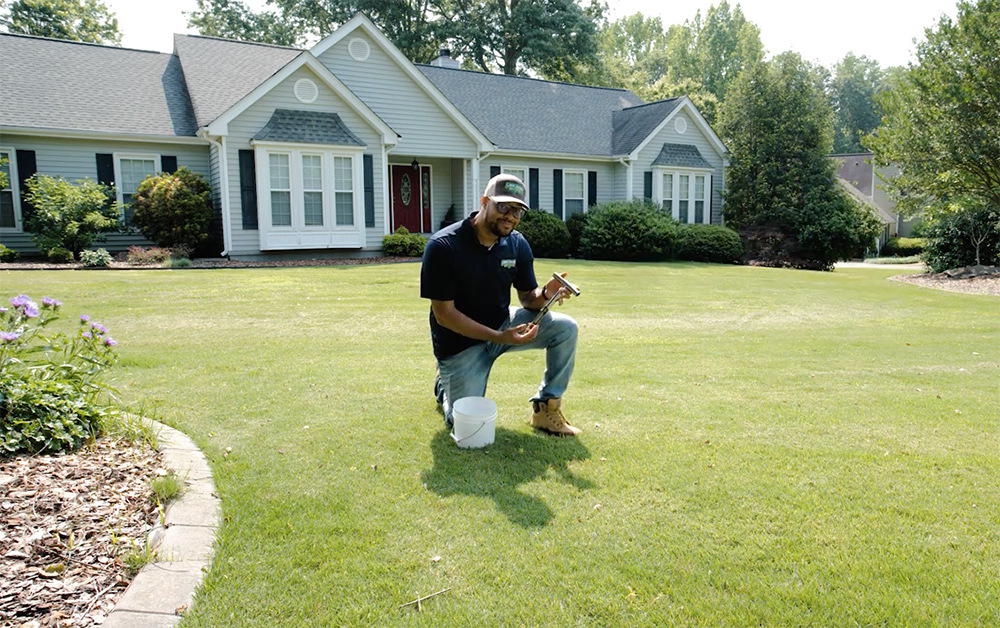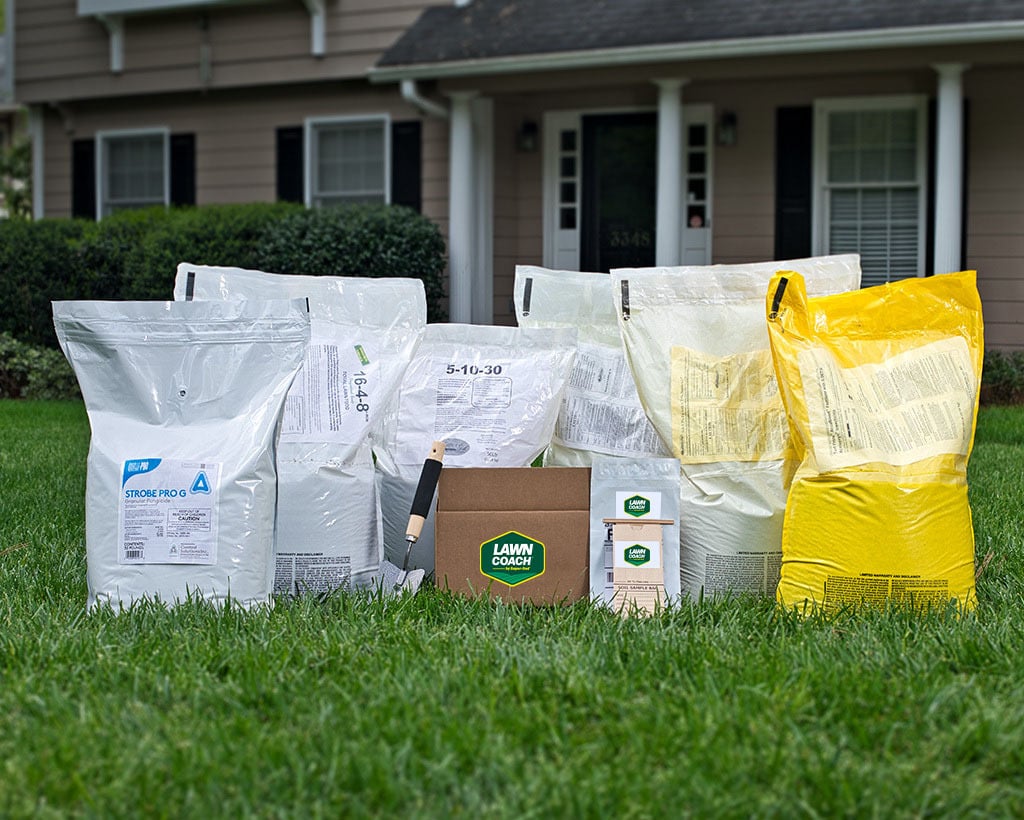

Every lawn improvement endeavor must begin somewhere, no matter how big or small.
Because healthy soil is the foundation of healthy lawns (and all gardens, for that matter), we recommend taking the soil-first approach when planting grass seed, laying sod, or just looking to improve your current lawn. Lawn care should begin with a soil test because it tells you your soil’s pH and nutrients.
Let’s explore why soil testing is important for achieving the most beautiful lawn possible. At the end, we’ll provide a link to another article that explains how to take soil samples and where to send them for lab testing.
Parts of a Soil Report: pH

pH is the measure of acidity and alkalinity of your soil.
It’s the same 0 to 14 scale you learned in chemistry class. The pH scale is logarithmic, so a change from 5 to 6 is a significant leap.
- 0 to 6.9 is acid
- 7 is neutral
- 1 to 14 is alkaline (or basic)
Fun Fact: Hydrogen ions are measured in aqueous solution to determine acidity or alkalinity. The long name “Potential of hydrogen” (or “power of hydrogen”) is shortened to pH.
Our understanding of pH has helped create better cleaning products, improved healthcare, and even develop tastier foods.
For lawn enthusiasts like us, it ensures healthier soils. Most lawn grasses prefer a slightly acidic or neutral pH in the 6 to 7 range. When soil pH is in the preferred range, turfgrasses can absorb the nutrients they need.
A soil test is important because it tells us where our soil lands on the scale so that decisions can be made to adjust pH. In our Southeastern clay and sand soils, lime or compost is added to raise pH to at least 6.
Did you know that different lawns thrive in different pH ranges?
- Bermuda thrives in a pH of 6 to 7
- Centipede is the most tolerant of acid soils, thriving in 5 to 6 pH
- Zoysia also thrives in 6 to 7 pH
- Tall Fescue prefers a slightly more alkaline soil at 6.5 to 7.5 pH
Even if you prefer natural fertilizer options, it’s critical to consider your lawn's pH. Your lawn can suffer if the soil is too acidic or alkaline for your grass type. Poor soil conditions in the Southeast make this especially problematic. Do yourself a favor and conduct a soil test, even just to see if the pH needs some work.
Further Reading: Understanding Lawn pH
Parts of a Soil Report: Soil Fertility

Soil fertility is the measure of nutrients in your soil.
Turfgrasses need 16 nutrients for growth, but nitrogen, phosphorus, and potassium (N-P-K) are the 3 nutrients most commonly needed, so they are the basis for most fertilizer blends. The fertilizers we sell also contain micronutrients for the overall health of your lawn.
Just like for pH, a soil nutrient test will tell us the levels of soil nutrients available so that decisions can be made on how much of each nutrient needs to be added.
Different lawns need different amounts of nutrients. For this article, we’ll keep it simple and talk in terms of low, medium, or high nitrogen requirements:
- Bermuda has a high nitrogen requirement
- Centipede requires low or no nitrogen; in fact, too much nitrogen can seriously harm a Centipede lawn
- Zoysia has a medium nitrogen requirement
- Tall Fescue has a high nitrogen requirement during the cool growing season, while low nitrogen applications during the summer help it endure the heat
Further Reading: Look up the Maintenance Guide for Your Grass (including specific fertility requirements)
Soil nutrient reports contain charts showing low, high, and within-range soil nutrient levels. Since these reports can be somewhat complicated, sign up for Lawn Coach to have us help you interpret the results and give you expert direction.
Soil Tests Save Time & Money
I’ve given several reasons why soil testing and pH are so important, but possibly the most important is cost.
Soil testing is vital because pH determines a lawn's ability to take up nutrients. Your soil could be full of nutrients that you’ve spent time and money on, but if grass roots can’t absorb them due to improper pH, they’re not doing your lawn any good. Taking the time to take a soil sample will reward you by getting the most out of your fertilizers, having the healthiest soil you can, and having a lawn that all your neighbors will envy.
Since soil pH and nutrient availability change over time, we recommend conducting yearly soil tests and adjusting fertilizer applications based on the feedback from the reports.
Now that we have established why soil tests are a good practice, the next step is to show you how easy it is to take soil samples and send them to a lab. Please continue enriching your soil test knowledge by reading How to Conduct a Soil Test for Your Lawn.
Got questions? Leave a comment below!





